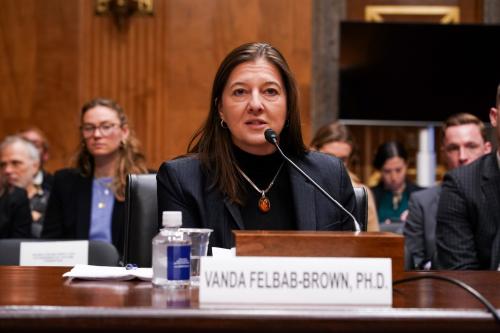In a interview with China Radio International, Vanda Felbab-Brown offers her insights on the current status of Mexico’s powerful drug cartels and the scope of narcotics traffic in the region.
In terms of volume, how big is the Mexican drug business compared to the Colombia cartels, Afghanistan and the Golden Triangle and what kind of drugs are we talking about here?
Vanda Felbab-Brown: Mexico has become the biggest conduit of drugs from other parts of Latin America into the United States. The estimates are that somewhere between 80 and 90 percent of cocaine produced in the Andean region comes to the U.S. from Mexico. In addition, Mexico also cultivates marijuana and opium poppies on the scale of about 30,000 to 40,000 hectares of marijuana a year. These numbers are very imprecise. We don’t have very good monitoring systems but nonetheless, those are the estimates — with about 20,000 to 30,000 hectares eradicated. [The estimates indicate] 20,000 to 25,000 hectares of poppy every year with about 15,000 to 20,000 hectares eradicated. It is quite possible that these numbers are substantial underestimates. Altogether the trade – there is also a substantial production of methamphetamines – brings on the order of 40 to 60 billion dollars a year to the Mexican cartels, at least in terms of revenue, if not in terms of actual profits. That is a very large income, a very large revenue chain. If you compare it to other places, like Afghanistan, certainly the level of domestic production is far smaller but the level of profit accumulation is far larger in Mexico than in Afghanistan, although Afghanistan produces more than 90-percent of the world’s opium poppies. Certainly these days this surpasses production in the Golden Triangle and most likely levels of profit in the Golden Triangle as well.



Commentary
Mexican Drug War
April 8, 2010